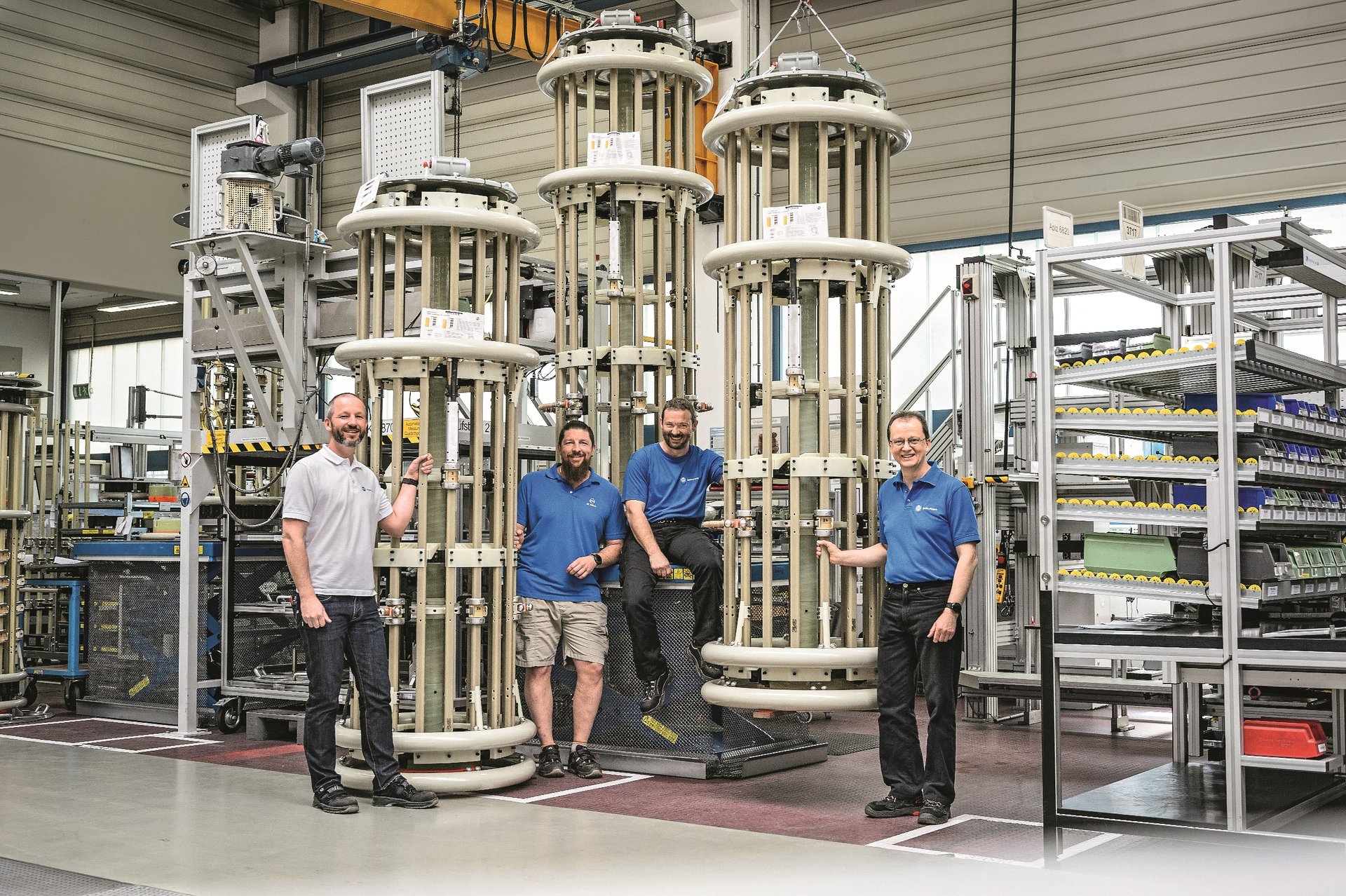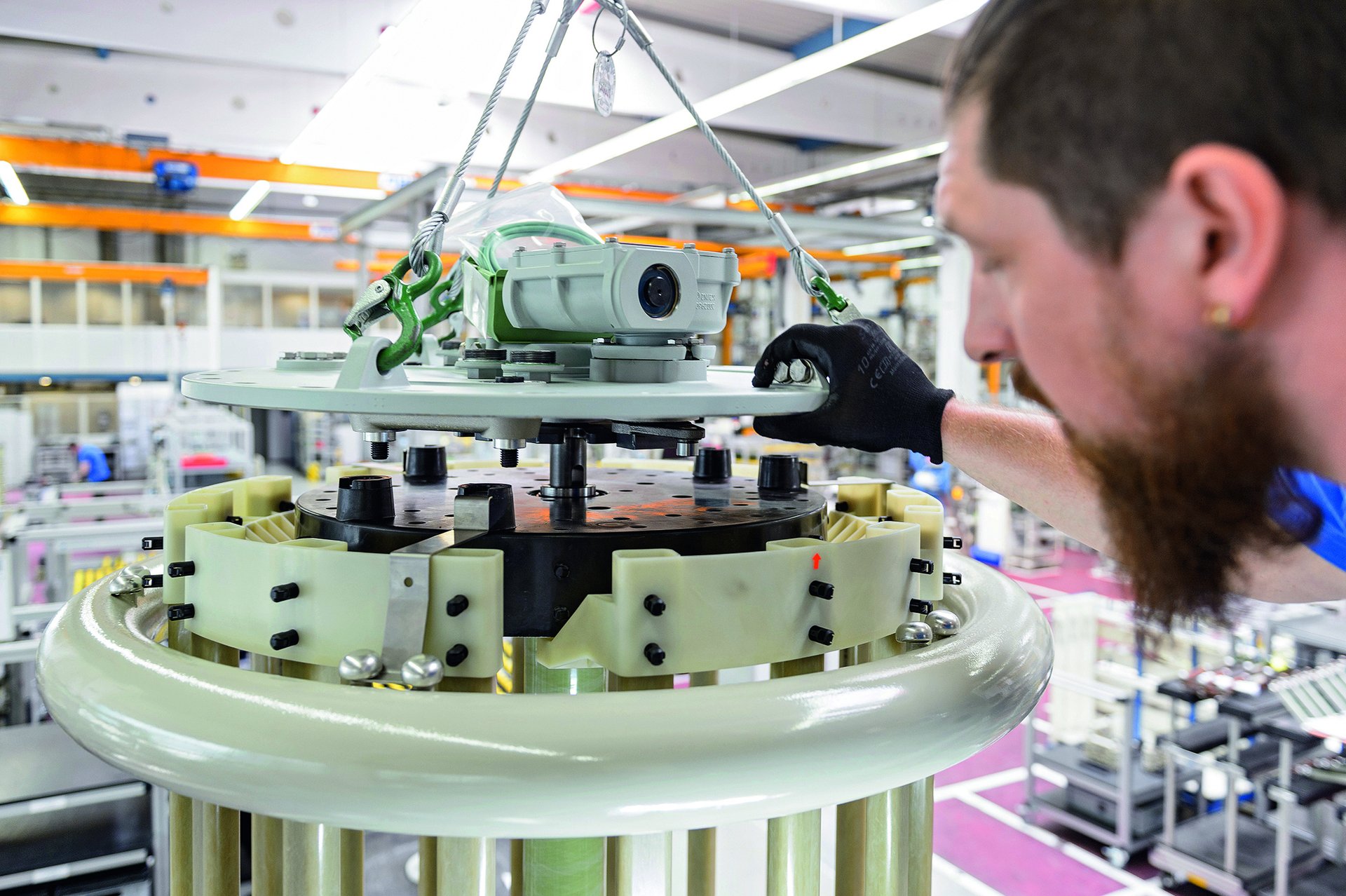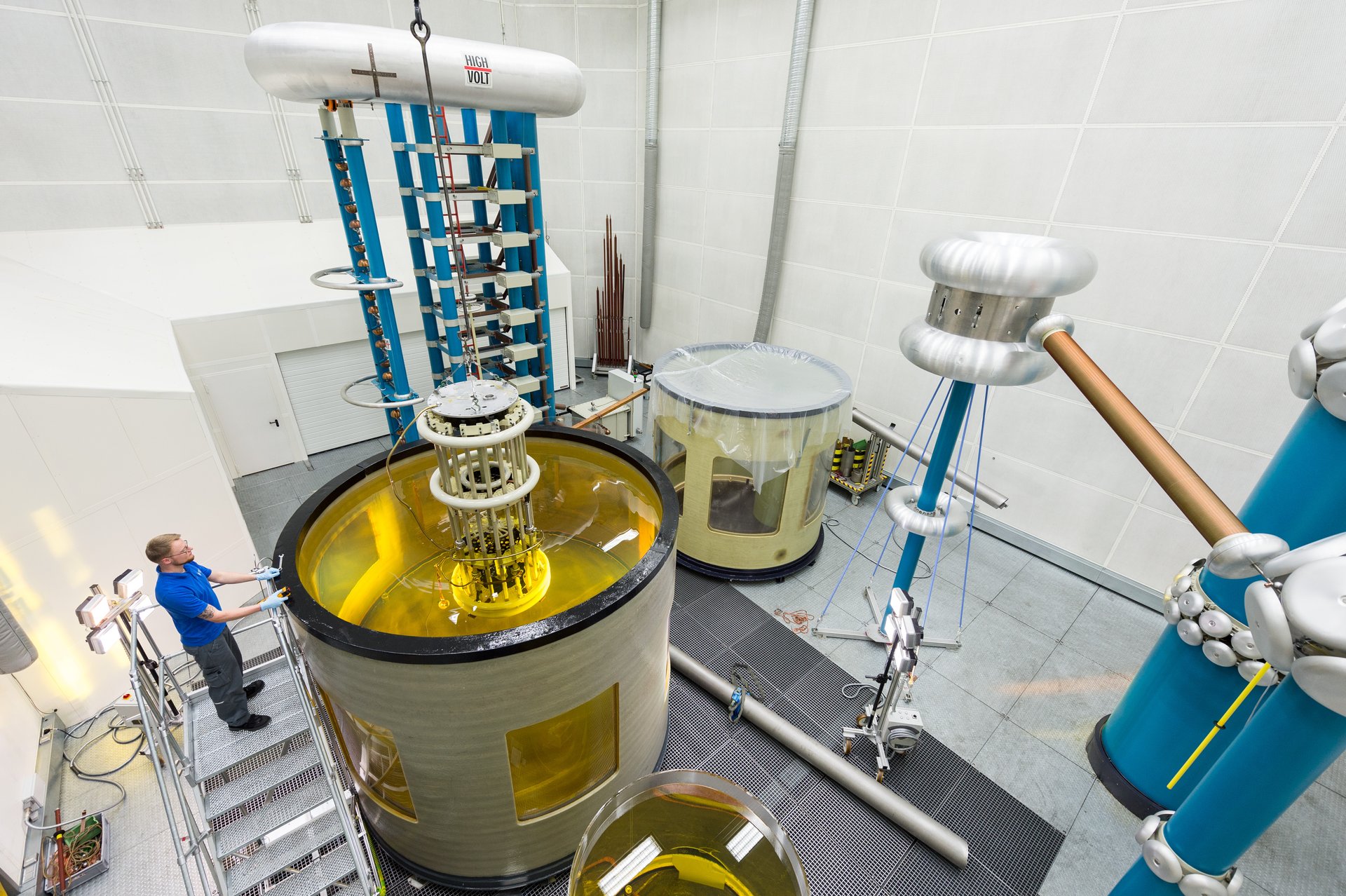-
Impulses
- Impulses overview
-
Transformer manufacturers
- South America's champions of the energy transition
- Traction Transformers – Future on the Rail
- Time of the giants: XXL transformers for more power
- "Reinhausen is ready to deliver!"
- Oversized de-energized tap-changers
- The most powerful transformers in the world for a 1,100 kV HVDC line in China
- "We are in a growth market with the VRDT"
- Digitalization turnaround: GANZ Intelligent Solutions relies on cooperation with MR
- "Transitioning to a solution provider presents a major opportunity for transformer manufacturers – and digitalization can help!"
-
Digitalization
- How AI can lend a hand
- myReinhausen: MR's central digital customer platform
- Why data centers (may) never fail
- Automation? (Cyber-) Secure!
- Globally unique: MESSKO® MTRAB® dehydrating breather communicates via cell phone app
- Remote Solutions: Professional help from a distance
- "Digitalization of the power grids will only work with comprehensive security measures"
- Why are you digitizing your transformers? Three questions for Rúnar Svavar Svavarsson.
- Six challenges, six solutions – Intelligent sensors for safe transformers
-
Energy transition
- The VRDT is the ideal solution to solve voltage problems in our distribution grids
- Making transformers more sustainable
- 940 tons of power regulation
- Sunny prospects: Municipal solar storage devices
- Four reasons why regulated distribution grids are the future
- "The energy transition is taking place in the distribution grids"
- Five theses on the future of power grids
- Storage at all network levels
- Test systems for the energy revolution
- Climate change, energy revolution and the future of power grids?
- A new design for utility poles
-
Wind and solar power
- The North Sea as Europe's green power plant
- Sahara electricity - safe for the island
- Are wind farms the new power plants?
- Direct current at all grid levels
- The MSCDN plant – the new "power plant generator" for stable grids
- Clean power grid with high-frequency filters
- Weatherproof cable testing for offshore wind parks
- VRDTs for Australia's distribution grids
- Lifetime optimization
- Power supply in industry
- Globalization
- Impulses overview
-
Transformer manufacturers
- South America's champions of the energy transition
- Traction Transformers – Future on the Rail
- Time of the giants: XXL transformers for more power
- "Reinhausen is ready to deliver!"
- Oversized de-energized tap-changers
- The most powerful transformers in the world for a 1,100 kV HVDC line in China
- "We are in a growth market with the VRDT"
- Digitalization turnaround: GANZ Intelligent Solutions relies on cooperation with MR
- "Transitioning to a solution provider presents a major opportunity for transformer manufacturers – and digitalization can help!"
-
Digitalization
- How AI can lend a hand
- myReinhausen: MR's central digital customer platform
- Why data centers (may) never fail
- Automation? (Cyber-) Secure!
- Globally unique: MESSKO® MTRAB® dehydrating breather communicates via cell phone app
- Remote Solutions: Professional help from a distance
- "Digitalization of the power grids will only work with comprehensive security measures"
- Why are you digitizing your transformers? Three questions for Rúnar Svavar Svavarsson.
- Six challenges, six solutions – Intelligent sensors for safe transformers
-
Energy transition
- The VRDT is the ideal solution to solve voltage problems in our distribution grids
- Making transformers more sustainable
- 940 tons of power regulation
- Sunny prospects: Municipal solar storage devices
- Four reasons why regulated distribution grids are the future
- "The energy transition is taking place in the distribution grids"
- Five theses on the future of power grids
- Storage at all network levels
- Test systems for the energy revolution
- Climate change, energy revolution and the future of power grids?
- A new design for utility poles
-
Wind and solar power
- The North Sea as Europe's green power plant
- Sahara electricity - safe for the island
- Are wind farms the new power plants?
- Direct current at all grid levels
- The MSCDN plant – the new "power plant generator" for stable grids
- Clean power grid with high-frequency filters
- Weatherproof cable testing for offshore wind parks
- VRDTs for Australia's distribution grids
-
Lifetime optimization
-
Power supply in industry
-
Globalization
Impulses - Portfolio
-
Career
Career
-
Company
Company
New record: MR’s de-energized tap-changers for Canada
MR delivers 3 giant DEEATAP® DU to PTI Transformers
When a de-energized tap-changer has to maintain a huge test voltage of 1,000 kilovolts and switch 112 kilovolts in a single step, size really does matter. The experts at Maschinenfabrik Reinhausen (MR) have built three of these giants for the Canadian transformer manufacturer PTI Transformers.
The largest de-energized tap-changers in MR’s portfolio measure three meters in length and one meter in diameter. No other supplier includes tap changers of this size as standard in its portfolio or has so much experience in highly specialized areas of application. However, at the outset, it wasn’t clear if the de-energized tap-changers PTI Transformers needed would be technically feasible even for MR.
SWITCHING STEP OF 112 KV
PTI Transformers had been commissioned by a Canadian energy provider to replace a transformer for a hydroelectric power plant that had reached the end of its service life. The new transformer had to be able to switch between one transmission line at 250 kilovolts and another at 143 kilovolts. The test voltage required was a massive 1,000 kilovolts. “From our point of view, the huge challenge of having to bridge a switching step of 112 kilovolts while maintaining a test voltage of this magnitude meant that there was only one supplier we wanted to work with—and that was MR,” states George Partyka Jr., Vice President of PTI Transformers. There was no doubt at all in the mind of the Canadian manager that MR could bring its technical know-how and its expertise to bear in building a de-energized tap-changer (DETC) to this specification. But it was obvious that it wouldn’t be easy.
SUPERSIZED DETCS
Karl-Heinz Sperger, MR project manager, said: “Historically, we have always relied upon rotary de-energized tap-changers with a head design. De-energized tap-changers of this magnitude can only be produced using this type of design. A straight-line de-energized tap-changer would need to be more than ten meters long to achieve the kind of performance values we were looking for.” One of the challenges that arose during the development stage was that MR’s design was only able to accommodate test voltages up to a maximum of 750 kilovolts. Mr. Sperger explains: “While these de-energized tap-changers are huge, there are still certain restrictions on the space we have to work with and we can’t just increase the distance between the contacts as much as we want. That made the physics of this project a real test. But true to our motto “If something is doable, we’ll do it” we worked together with PTI Transformers to find the right solution.”
SPECIAL DESIGN
Another significant factor contributing to the complexity of the project was the transmission ratio of 1:1.78. Switching 143 kilovolts to 250 kilovolts in a single step requires six high-voltage winding strands — for every phase. For PTI Transformers, this meant housing 18 windings and three of the massive tap changers within the transformer, something which, as PTI Transformers’ Mr. Partyka explained, was only possible with MR’s support: “The transformer power is highly dependent on the tap-changer capacity, so the development departments working on the tap-changer design and the transformer design had to work together very closely. Only as a team was it possible for us to coordinate the winding configuration with the special design of the tap changer.” The PTI Transformers and MR experts completed this complex development task in a mere three months, resulting in the order being placed in February 2019 and allowing the de-energized tap-changers to go into production. The technicians were then able to construct the three special pieces of equipment in just five days.

We are here for you. Wherever you are.
Looking for the right contact partner?
Do you have a concern, but don't know whom you should contact? You will find that information in our contact overview. In the event of any technical disturbances, our 24/7 support is always at your disposal.
Welcome to myReinhausen
myReinhausen is MR's central, digital customer platform. On myReinhausen, customers can access customer-specific MR information as well as numerous free features related to the MR portfolio.
myReinhausenJoin Reinhausen family
Find your ideal job quickly!
Check our vacancies here. Apply today and contribute at the world market leader in energy technology keeping the energy supply stable in the future.



